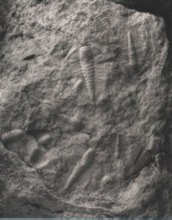 Elemental Discoveries
Elemental Discoveries
 Elemental Discoveries
Elemental Discoveries
 British chemists have enlisted bacteria to help them build porous fibres from
zeolites. The research could lead to the development of filamentous materials
for catalytic and separation applications as well as in creating novel
biocompatible materials.
British chemists have enlisted bacteria to help them build porous fibres from
zeolites. The research could lead to the development of filamentous materials
for catalytic and separation applications as well as in creating novel
biocompatible materials.
Stephen
Mann, Sean Davis and Bao Zhang at the University of Bristol have worked with
molecular biologist Neil Mendelson of the University of Arizona at Tucson to
extend the technology of chemical templating to the bacterial world.
Until
recently, chemists have relied on small molecules and supramolecular aggregates
to assist them in creating inorganic frameworks with well- defined networks of
pores. There have been many success in synthesising artificial versions of
natural minerals such as the zeolites with wide pores and channels and with
unusual cross-sectional shapes, such as clover leaves.
According
to Mann, these molecular templates influence the size and nature of the pore
size and architecture. He reasoned that rather than relying on molecular scale
templates, mineral pores might be opened wider using cell-sized species, such as
bacteria. His team has previously shown that cellular templates can help extend
the length scale of ordering in new porous materials such as the silica-based
MCM-41. Now, the team has used a similar strategy to create zeolite fibres with
ordered pores.
The
researchers used a stable aqueous dispersion of zeolite nanoparticles as
building blocks and a supercellular thread of bacteria Bacillus subtilis
as the template. The thread consists of a hexagonally packed array of long
multicellular filaments which swells when placed in a colloidal sol of zeolite nanoparticles. This causes the silicalite nanoparticles to diffuse into the spaces between the filaments to give an ordered composite. The team then blast
the composite at 600 Celsius to destroy the bacterial template leaving behind an
intact white zeolite fibre with ordered macroporous channels lined by 100
nm-wide walls of the coalesced silicalite nanoparticles.
Various
techniques, such as X-ray and electron diffraction and electron microscopy were
used to demonstrate that the resulting porous fibres are composed of crystalline
silicalite. The materials have a hierarchical structure based on channel-like
pores on both the micrometre and nanometre length scales. They could therefore
be useful in flow systems where the larger channels reduce back-pressure and
allow easy access of reactants or waste-products to the zeolitic molecular
channels contained within the silicalite walls.
The researchers report their work in more detail in Chem. Commun., 2000, 781.
 Ancient olenid trilobites survived the toxic undersea world of 500
million years ago by inbuilding their own chemical detoxification plant in
the form of colonies of sulphur-digesting bacteria. The sulphur products
from the bugs then provided a food supply for the trilobites.
Ancient olenid trilobites survived the toxic undersea world of 500
million years ago by inbuilding their own chemical detoxification plant in
the form of colonies of sulphur-digesting bacteria. The sulphur products
from the bugs then provided a food supply for the trilobites.
Richard Fortey of the UK's
National History Museum believes the olenid trilobites lived at the bottom
of the ocean that is now the Scandinavian land mass.
While trilobites are now
extinct, and have been for some 250 million years, we
still find sulphur bacteria living in the sulphurous environment near
undersea thermal vents where oxygen is rare and little light reaches them.
The latest examination of olenid
fossils has revealed to Fortey that these scuttling creatures had certain
features in common with modern species that exploit the sulphur bugs, such
as shrimp. For example, an olenid's mouth seems redundant while a wide
thorax, thin shell and multiple segmentation hint at a large surface area
that could be used to cultivate a bacterial crop.
Gardening sulphur bugs meant the
olenids were not poisoned by the toxic spew and could harness the sulphur's
chemical energy in much the same
way as animals that eat green plants on land harness the energy of the sun.
Such a
symbiotic relationship is very important in modern marine life, corals are the
archetypal example. They allow animals to colonise the sea floor in places they
otherwise would be unable. An understanding of such ecosystems could help in
conservation of those that survive to this day.